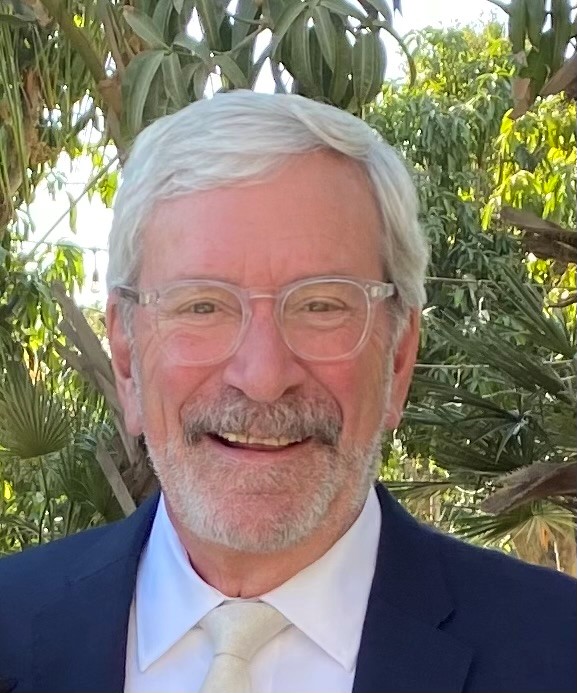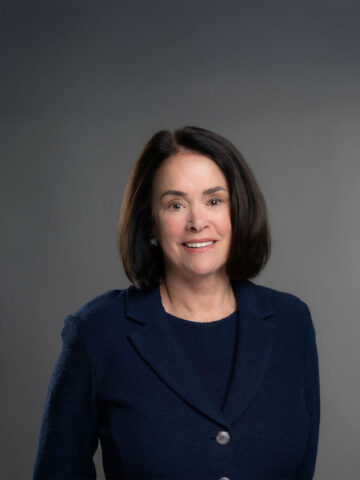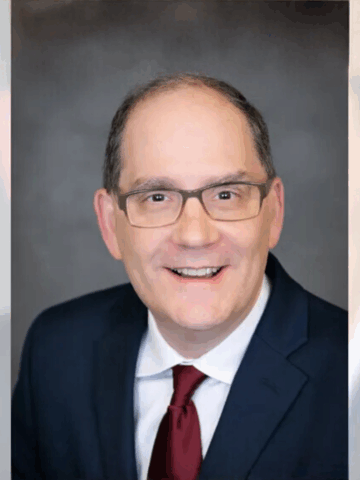Back when he was in college and considering a career in organic chemistry, Paul Van Dolah, whose father was an organic chemist and research administrator at the U.S. Bureau of Mines, recalls a Saturday laboratory class he took.
“They’d hand you a substance and you had to figure out what it was,” Paul says of his undergraduate years at Northwestern University, where he ended up double-majoring in biology and chemistry and minoring in psychology.
Figuring things out has proven to be one of Paul’s strengths.
After having a lengthy discussion with a friend who was doing his administrative residency at Walter Reed Army Medical Center in Washington, D.C., Paul decided to go into hospital administration.
“It sounded interesting to me,” he says of his decision to earn a master’s degree in health administration at George Washington University.
Paul’s 50-year career in healthcare, which began with an administrative internship at Georgetown University Hospital, has been distinguished by his proficiency in solving problems and growing programs.

For several years after leadership positions at four hospitals – two of them pediatric – Paul worked as a consultant whose clients included CHOC before he was named, on two different occasions, interim chief operating officer (COO) of CHOC.
His most recent interim COO stint became permanent in November 2021. The following year, Paul was named CHOC’s first chief transformation officer (CTO).
Now, he’s focusing all his efforts on the CTO role after Kim Milstien was named COO in May 2023.
Key leadership position
As CTO, Paul’s strategic, financial, operations, and physician relations experience is critical to the success of CHOC’s evolution from a premier, regional children’s hospital-centric system to a nationally recognized and integrated pediatric healthcare delivery enterprise.
His primary responsibilities are guiding effective change, fostering a vibrant organizational culture, and driving continued growth through strategy, innovation and technology.
In partnership with the chief operation officer, chief medical officer, and chief financial officer, Paul’s job is to transform CHOC’s work environment and culture, the workforce, the patient and family experience, and CHOC’s reputation at the national level.
“I like trying to figure out how you make the business of medicine work,” he says. “I also love building new clinical programs, and collaborating with physicians and clinical leaders to say, ‘Hey, what could we create here that could be new and different and exciting?’ And that’s what I’ve been doing in hospital administration: building programs and building people.
“And the other thing I enjoy about it is, and this may sound strange, but you’d be hard pressed to find a more complex business to run than a hospital. That’s what fascinates me about it: trying to figure out how you take this phenomenally complex organization and make it do what it needs to do. That’s fascinating.”
Recalibration
Paul was born in California but his family – he has an older brother and sister — moved to Pittsburgh when he was 2 years old.
Paul landed his first job as an administrative fellow at Hahnemann Medical College and Hospital in downtown Philadelphia. He rose to the rank of associate administrator of the 550-bed medical school hospital.
Paul then served as assistant director of hospitals at Indiana University Hospitals, a 670-bed medical school hospital system operating two adult hospitals, one tertiary care pediatric specialty referral hospital, and multiple adult and pediatric specialty clinics.
In 1984, he returned to California to lead the senior management team at Valley Children’s Hospital in Fresno as senior VP and COO.
Four years later, Paul joined Rady Children’s Hospital-San Diego (then named Children’s Hospital and Health Center) where he spent 16 years as executive VP and COO before striking out on his own with Van Dolah & Associates in 2003.
Pivotal moment
Paul says he decided to work for CHOC because it’s a pivotal moment for the enterprise.
“CHOC has the potential to grow into a nationally and internationally recognized institution,” Paul says. “One of the things we’ve been doing is really focusing on recruiting nationally recognized talent. That’s going to be huge in order to take our programs where we want them to go.”
He cited the recruitment of Dr. John Crawford as an example. Dr. Crawford is medical director of neurology and co-medical director of the CHOC Neuroscience Institute.
He also cited Dr. Terrie Inder, chair of the new Center of Neonatal Research at CHOC and an expert in the development of the newborn brain, as well as internationally known thoracic surgeon Dr. Glen Van Arsdell, who splits time between CHOC and UCLA Health.
“It’s these kinds of key recruitments that we’re going after,” Paul says. “The cardiovascular program we’re putting together in partnership with UCLA is going to be huge.”
The partnership will enhance access to world-class pediatric congenital cardiac care for children and their families across Southern California. Building on their strengths, both institutions will create a joint pediatric heart program that will become a leading destination for diagnosing and treating the full spectrum of congenital and acquired heart disease.
Key programs
Also key for CHOC’s growth is incubating key programs, Paul says.
He noted the upcoming Maternal Fetal Center, a special delivery unit for sick newborns of healthy mothers.
“That will be a game changer,” Paul says.
He’s also excited about the new Cardiovascular Intensive Care Unit (CVICU) and Neuroscience Unit (NSU).
The 24-bed CVICU, scheduled to open in late 2024 or early 2025 on the sixth floor of the Bill Holmes Tower, will accommodate an expected increase in cardiac care volume. It will be twice the size of CHOC’s existing CVICU and be adjacent to the relocated Heart Services. The pediatric intensive care unit (PICU) will expand into our current CVICU space on the sixth floor of the North Tower.
Because of CHOC’s expanding neurosurgical, epilepsy center, and movement disorder services, the current NSU has become undersized. The new unit will feature 28 private rooms, including a 12-bed dedicated epilepsy monitoring unit, or EMU.
Construction on the new NSU began this summer. The new unit plans to go live in the last quarter of 2024.
“You take a look at those kinds of things and that’s where we’re growing excellence – that’s what’s going to differentiate us,” Paul says.
Breaking down silos
“The other piece I find exciting and fun to be a part of is being able to build a truly integrative healthcare delivery system,” Paul adds. “We had historically thought of ourselves as a hospital. We have built one of the larger primary care networks in the country, and we need to be thinking of ourselves as an integrated enterprise.”
CHOC is working with its primary care community, especially those working in hospital leadership, to figure out how to bring things together and not have a primary care silo, a specialty care silo, and a hospital silo, but to act and work and behave as if we are one entity, Paul explains.
“It’s about growing excellence in the clinical environment,” he says. “It’s growing excellence through key recruitments, it’s building the physical facilities to be able to house those services, it’s about building a network that really figures out how to feed that – those are the things that are fun.”
Dogs and food
Outside of work, Paul enjoys sailing and golf.
“I’m a horrible golfer,” he says. “I’m pathetic. But it’s a beautiful way to spend a day walking around. I don’t take the game seriously. I don’t even keep score. I’m out there to have fun.”
Paul and his wife Lisa like pets.
They have had dogs for years but went a spell without one. They recently got a Portuguese Water Dog named Torre.
Paul also loves to cook.
“When I was in college I was a chef on Nantucket Island at a high-end, French cuisine restaurant,” Paul says. “Now, on Saturday mornings I go on the Internet and rummage around for new recipes. I love experimenting with different things.”




